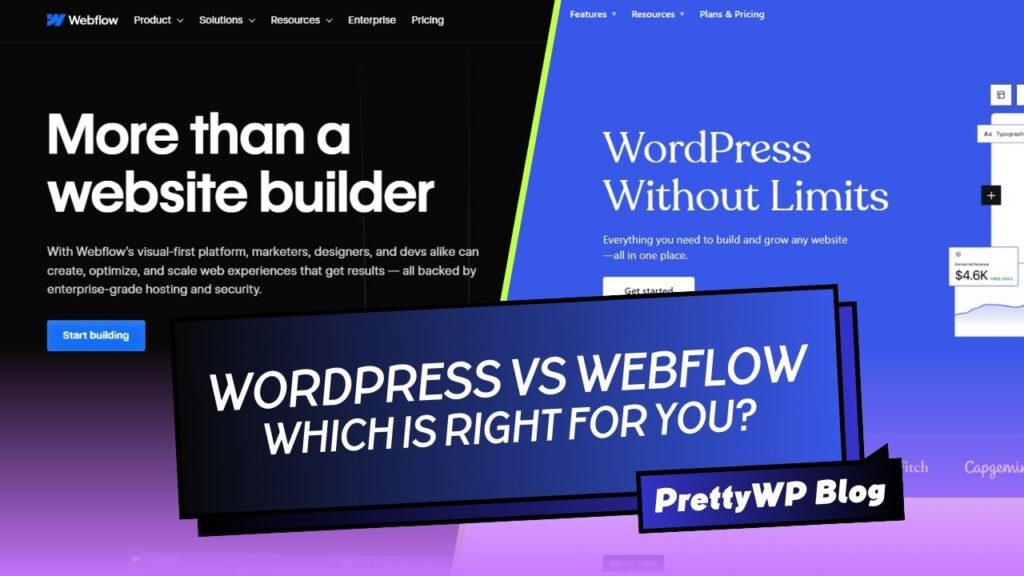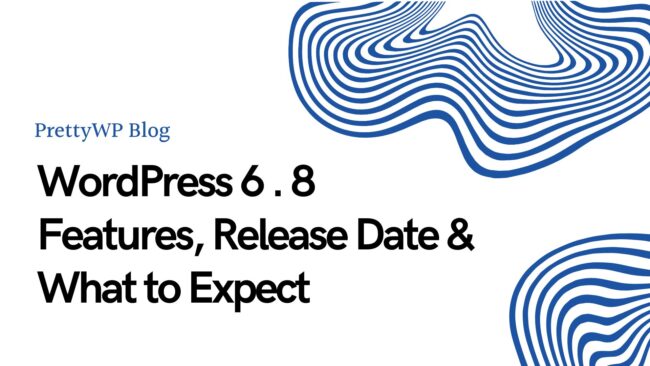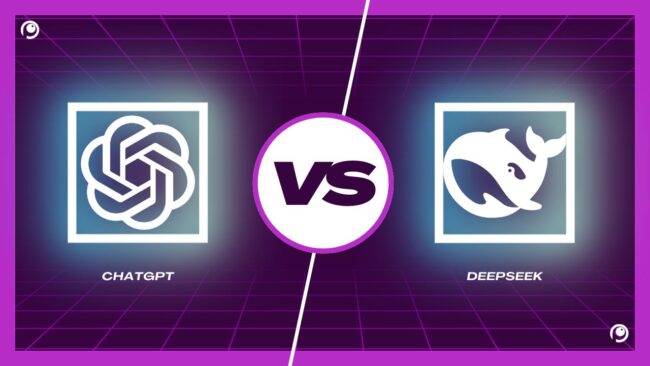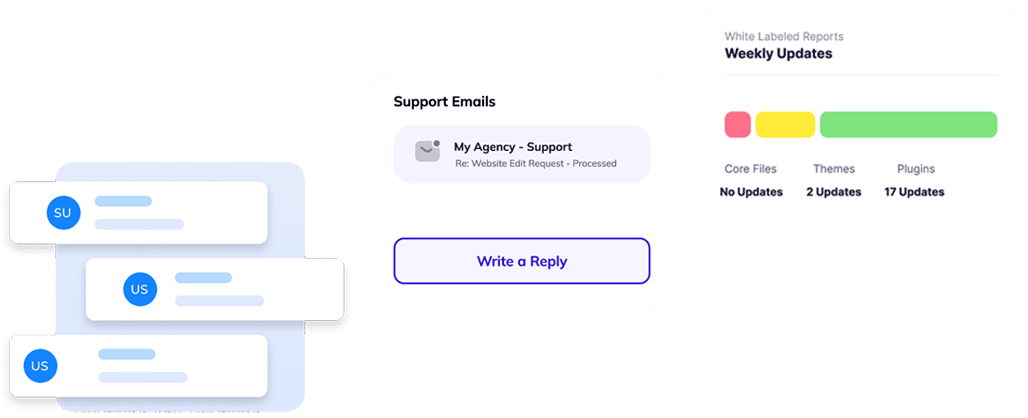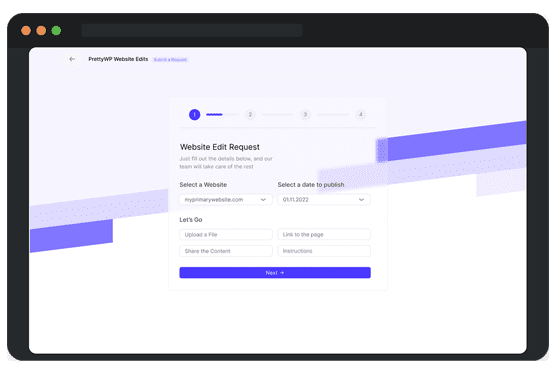Choosing the right website builder is a crucial decision for your project’s success in 2024. With many options available, finding a platform that fits your needs can greatly affect your site’s performance, usability, and overall impact.
WordPress vs Webflow (2024) — Which is Better for Your Website? This question resonates with many website creators as both platforms offer unique features tailored to different types of users. Whether you’re an experienced developer seeking extensive customization or a designer focused on intuitive, visually appealing site creation, understanding the strengths and limitations of these tools is essential.
What We Will Discuss
This article will provide a detailed comparison between WordPress and Webflow, looking at various aspects such as:
- Platform Overview: Understanding what each platform offers and their core functionalities.
- Pros and Cons: Identifying the advantages and potential challenges associated with using WordPress and Webflow.
- Pricing Models: Comparing the cost structures to help you budget effectively.
- Customization Capabilities: Exploring how each platform caters to customization needs.
- Security Features: Analyzing the security measures implemented by both platforms.
- Ease of Use: Evaluating user experience from a beginner’s perspective.
- SEO Capabilities: Review how each platform supports search engine optimization efforts.
- Performance Optimization: Investigating strategies for speed and efficiency.
Each section will provide insights to help you make an informed decision based on your specific requirements. By the end of this comprehensive guide, you’ll have a clear understanding of which platform—WordPress or Webflow—suits your project best.
Understanding WordPress
WordPress is a widely-used open-source Content Management System (CMS) that powers approximately 43% of all websites globally. Originally launched in 2003 as a blogging tool, WordPress has evolved into a versatile platform capable of creating nearly any type of website, from simple blogs to complex eCommerce sites. Its open-source nature means the software is freely available, and its extensive community continually contributes to its development, ensuring it remains up-to-date with web standards and security practices.
Key Features and Functionalities
WordPress stands out due to its rich set of features that cater to various needs:
- Themes and Templates: WordPress offers thousands of pre-designed themes, both free and premium, allowing users to change the look and feel of their websites effortlessly. For those seeking guidance on how to select the perfect theme, this beginner’s guide provides valuable insights. Moreover, if you’re looking for inspiration, you might find these best free WordPress themes helpful.
- Plugins: With over 50,000 plugins available in the official repository, users can extend the functionality of their websites without needing to write code. Plugins cover a range of functionalities such as SEO optimization, social media integration, security enhancements, eCommerce capabilities through WooCommerce, and much more.
- User-Friendly Interface: WordPress’s dashboard is intuitive and user-friendly, making it accessible for beginners while providing advanced options for experienced developers. The interface includes tools for writing posts and pages, managing media files, handling comments, and more.
- Block Editor (Gutenberg): Introduced in WordPress 5.0, Gutenberg revolutionized content creation with a block-based editor. Users can create complex layouts by adding blocks for different types of content such as text, images, videos, galleries, buttons, and more.
- Custom Post Types: Beyond blog posts and static pages, WordPress supports custom post types which allow for the creation of specialized content formats like portfolios, testimonials, events, products (via WooCommerce), etc.
- SEO Capabilities: Out-of-the-box WordPress is SEO-friendly. With plugins like Yoast SEO or Rank Math enhancing these capabilities further by providing tools for meta tags management, XML sitemaps generation, on-page SEO analysis, breadcrumb navigation setup—ensuring your site ranks well on search engines becomes straightforward.
- Media Management: The built-in media library allows easy upload and management of images, videos, audio files. You can also perform basic editing tasks like cropping or resizing directly within the dashboard.
- Responsive Design: Most modern WordPress themes are responsive by default. This ensures that websites look good on all devices—desktops, tablets, and smartphones—without requiring additional work from the user.
- Community Support: As an open-source platform with a large user base worldwide there’s an abundance of resources available including forums discussions documentation tutorials video guides webinars meetups conferences making it easy find help when needed
Integration Capabilities
One significant advantage of using WordPress is how well it integrates with other services and platforms:
- eCommerce: WooCommerce transforms any WordPress site into a powerful online store offering features like product listings inventory management payment gateways shipping options tax settings etc.
Pros and Cons of Using WordPress
WordPress stands out as a powerful Content Management System (CMS) due to its extensive customization options, which allow users to tailor their websites precisely to their needs. The platform offers:
- Themes: With thousands of free and premium themes available, WordPress enables you to change the look and feel of your website effortlessly. Themes cater to various niches, from blogs and portfolios to eCommerce stores and corporate sites.
- Plugins: The extensive plugin ecosystem is one of WordPress’s strongest features. With over 50,000 plugins available in the WordPress Plugin Directory, you can add almost any functionality imaginable—SEO tools, social media integrations, advanced analytics, security enhancements, and more.
- Custom Code: For those with coding knowledge, WordPress offers unparalleled flexibility. You can modify core files, create custom themes or plugins, and tweak CSS/PHP code for unique functionalities.
Examples of Popular Plugins
Some widely-used plugins that showcase the versatility of WordPress include:
- Yoast SEO: Enhances your site’s search engine optimization capabilities.
- WooCommerce: Transforms your WordPress site into a full-fledged eCommerce store.
- Elementor: A drag-and-drop page builder that simplifies design without needing to touch a line of code.
Potential Challenges Faced by Users
While the advantages are substantial, it’s essential to recognize that WordPress also poses some challenges. These hurdles often revolve around its steep learning curve, setup complexity, and ongoing maintenance demands.
Technical Knowledge Requirements
WordPress requires a certain level of technical expertise for optimal use:
- Setup Complexity: Installing WordPress involves selecting a web host (like SiteGround or AWS), configuring domain settings, and setting up databases. This initial setup might be daunting for beginners.
- Customization Demands: While themes and plugins offer extensive customization possibilities, they often require technical adjustments. CSS tweaking or PHP modifications are common tasks for achieving a tailored appearance or functionality.
“WordPress is incredibly powerful but does demand a good understanding of web development principles,” says Jane Doe, a seasoned web developer.
Maintenance Demands
Maintenance is another critical aspect where users need to stay vigilant:
- Regular Updates: Keeping your WordPress version, themes, and plugins updated is crucial for security and performance. Failure to do so can lead to vulnerabilities.
- Security Measures: Given its popularity, WordPress sites are frequent targets for cyber-attacks. Implementing robust security protocols through plugins like Wordfence or iThemes Security becomes necessary but adds layer of complexity.
- Performance Optimization: Achieving optimal performance often requires technical adjustments such as caching mechanisms, database optimizations, and image compressions.
Balancing Flexibility with Complexity
The dual nature of WordPress—offering boundless customization while demanding significant technical involvement—creates a balancing act. On one side:
- Users have unmatched control over every aspect of their site.
- Businesses can scale their operations effortlessly by leveraging various integrations and custom developments.
On the other side:
- Beginners might find themselves overwhelmed by the myriad options and technical requirements.
- Ongoing maintenance can become time-consuming without proper knowledge or resources.
Exploring Webflow as an All-in-One Solution
Webflow is a powerful SaaS platform that makes it easy to create websites. Unlike traditional platforms that require coding skills, Webflow is designed for those who prefer a visual design interface. This makes it a great choice for designers and beginners.
Unique Selling Proposition: Visual Design Without Coding
Webflow’s main appeal is its visual design capabilities. With a drag-and-drop interface, users can create complex and visually stunning websites without any coding knowledge. This feature opens up web development to individuals without a technical background, allowing them to build professional-looking websites.
Built-In Features for SEO and eCommerce
SEO Performance:
Webflow not only allows users to design beautiful websites but also includes built-in features that improve SEO performance. Users have the ability to:
- Edit meta titles and descriptions directly within the platform.
- Generate clean HTML5 and CSS3 code automatically.
- Implement structured data for better search engine visibility.
These integrated SEO tools ensure that your website not only looks great but also ranks well on search engines.
eCommerce Functionality:
For those looking to set up online stores, Webflow offers comprehensive eCommerce functionality. Key features include:
- Product Management: Easily add and manage products with custom fields for detailed product descriptions.
- Secure Checkout: Built-in secure checkout to protect customer information.
- Payment Integrations: Seamless integration with popular payment gateways like Stripe and PayPal.
- Customizable Cart: Full control over the shopping cart experience, allowing you to tailor it to your brand’s needs.
These functionalities make Webflow a versatile choice for both small businesses and larger enterprises.
User-Friendly Interface:
The intuitive nature of Webflow’s interface makes it accessible even for beginners. The platform offers:
- Pre-made Templates: A variety of free and premium templates designed by professionals.
- Design Elements/Blocks: Over 20 customizable elements including sliders, galleries, and forms.
- Global Styling: Create reusable components to maintain consistency across your site.
This user-friendly approach ensures that anyone can quickly get started with building their site while still having the flexibility to customize extensively.
Enhanced Security:
Security is another area where Webflow excels. The platform handles hosting and includes built-in security features such as:
- SSL Encryption: Automatic SSL encryption for all sites, ensuring data protection.
- Daily Backups: Regular backups that safeguard your content against data loss.
- DDoS Protection: Measures in place to protect against distributed denial-of-service attacks.
These security measures provide peace of mind, knowing your site is protected from common threats.
Comparison with WordPress
When comparing WordPress vs Webflow (2024) — which is better for your website? It boils down to what you prioritize in a website builder. WordPress offers unparalleled customization options through themes and plugins but requires more technical know-how. On the other hand, Webflow simplifies the creation process with its visual design interface while still providing powerful built-in features for SEO and eCommerce.
For those who value ease of use and quick deployment without sacrificing quality or functionality, Webflow presents a compelling option.
Pros and Cons of Using Webflow
Benefits of Using Webflow’s User-Friendly Drag-and-Drop Interface for Beginners:
Webflow stands out as an intuitive platform, particularly appealing for those who prioritize ease of use and quick setup.
- Drag-and-Drop Interface: One of the most notable features is its drag-and-drop interface, which allows users to design visually stunning websites without writing a single line of code. This makes Webflow accessible to beginners who may not have any technical background.
- Visual Design Tools: With a focus on visual design, users can manipulate elements directly on the page, offering a WYSIWYG (What You See Is What You Get) experience. This real-time editing ensures that what you design is exactly what visitors will see.
- Pre-Made Templates: For those who prefer starting with a template, Webflow offers a variety of free and paid templates. These templates are fully customizable, enabling users to tweak designs to match their brand identity.
- Integrated Hosting: The platform includes integrated hosting services, which means you don’t need to worry about third-party hosting providers. This integration simplifies the process, allowing for quicker deployment.
- Built-In SEO Tools: Webflow comes with built-in SEO tools that help optimize your site for search engines from the get-go. Features like meta tags, alt texts for images, and automatic sitemap generation make it easier to enhance your site’s visibility.
Considerations Regarding Its Pricing Structure for Larger Websites or Businesses:
While Webflow offers many advantages, it’s crucial to consider its pricing structure when planning larger projects or business websites.
Tiered Pricing Plans:
Webflow’s pricing is structured in tiers based on features and capabilities. For example:
- Starter Plan: Free but limited features.
- Basic Plan: $18 per month — suitable for simple websites.
- CMS Plan: $29 per month — includes content management features.
- Business Plan: $49 per month — designed for larger businesses with higher traffic needs.
Each tier addresses different needs but can become costly as your requirements grow. For instance, if you require extensive eCommerce functionality or multiple editors, costs can escalate quickly.
E-Commerce Site Plans:
Webflow also provides specific plans tailored for eCommerce sites:
- Standard Plan: $42 per month — includes all CMS features plus basic eCommerce capabilities.
- Plus Plan: $84 per month — adds more advanced eCommerce functionalities and higher limits on products and transactions.
- Advanced Plan: $235 per month — designed for large-scale eCommerce operations.
Scalability Costs:
As your website scales in complexity and traffic, you may find yourself needing to upgrade your plan frequently. Unlike WordPress, where additional costs often come from plugins or third-party services, Webflow’s cost is more predictable but potentially higher over time.
Limited Customization Options Compared to WordPress
Webflow excels in providing tools for quick and beautiful site creation; however, it falls short when compared to WordPress regarding customization possibilities.
- Design-Centric Approach: Webflow’s strength lies in its design-centric approach but it offers fewer customization options than WordPress. While themes and components allow some level of personalization, they cannot match the depth available through WordPress’s vast library of plugins and themes.
- Custom Code Integration: Though Webflow permits custom code integration (HTML/CSS/JavaScript), it isn’t as flexible as WordPress in supporting complex functionalities or third-party integrations. Developers who require extensive backend customization may find this limiting.
- Plugin Ecosystem: Unlike WordPress’s extensive plugin ecosystem (over 50k plugins), Webflow has limited third-party extensions. This constraint might be a drawback if you’re looking to add specific functionalities not natively supported by the platform.
Considering these factors carefully before choosing between these two platforms can help ensure that your decision aligns with both current needs and future aspirations for your online presence.
Pricing Comparison: WordPress vs Webflow
When comparing the costs associated with WordPress and Webflow, it’s essential to break down the expenses into clear categories. Each platform has a distinct pricing structure that caters to different needs and budgets. Let’s delve into the specifics to help you understand which option might be more cost-effective for your website.
WordPress Pricing Overview
WordPress is known for its flexibility and scalability, but this often comes with varied costs depending on your choices.
1. Core Software:
- Cost: Free
WordPress itself is an open-source platform, which means you don’t pay anything to download and use it.
2. Hosting:
- Cost: Varies widely
Popular hosting providers like Kinsta, SiteGround, and AWS offer different plans. For example:
- Kinsta: Starts at $35 /month per site.
- SiteGround: Starts at approximately $6.99/month.
- AWS: Pricing varies based on usage but can start at around $3-$5/month for low-tier options.
3. Domain Registration:
- Cost: Around $10-$20/year
- You need to register a domain name separately through registrars like Namecheap or GoDaddy.
4. Themes:
- Cost: Free to premium (ranging from $30 to $100+)
- While there are thousands of free themes available, premium themes such as those from Elegant Themes can add a professional touch and more functionality.
5. Plugins:
- Cost: Free to premium (ranging from $5 to $100+ per plugin)
Essential plugins like security (Wordfence), SEO (Rank Math), and eCommerce (WooCommerce) can be free or require a paid subscription for advanced features.
Webflow Pricing Overview
Webflow offers an all-in-one solution with tiered pricing plans that include hosting and other features.
General Site Plans:
- Starter Plan: Free – Limited features suitable for simple sites or personal projects.
- Basic Plan: $14/month – Custom domain, no CMS capabilities.
- CMS Plan: $23/month – Ideal for content-driven sites with up to 2,000 CMS items.
- Business Plan: $49/month – Includes advanced features like enhanced form capabilities and higher traffic limits.
- Enterprise Plan: Custom pricing – Tailored solutions for high-demand websites.
E-Commerce Plans:
For businesses looking to sell products online:
- Standard Plan: $42/month – All CMS features plus up to 500 eCommerce items.
- Plus Plan: $84/month – All Business features plus up to 5,000 eCommerce items.
- Advanced Plan: $235/month – Supports up to 15,000 eCommerce items and includes all advanced features.
Comparing Costs
When weighing the costs between WordPress and Webflow:
Initial Setup Costs:
| WordPress and Webflow Core Software | Free | N/A |
| Hosting | ~$5-$9/month | Included in plan |
| Domain Registration | ~$10-$15/year | Included in higher plans |
| Themes/Design | Free-$100+ | Free-$100+ |
| Plugins/Extensions | Free-$100+ | Included in plan |
Ongoing Costs
With WordPress, ongoing costs largely depend on the complexity of your site and required functionalities. Premium themes/plugins add recurring costs but offer extensive customization.
Webflow’s pricing is more predictable due to its all-in-one nature; however, it can become costly as your site grows or if you require additional features, such as eCommerce capabilities. Keep in mind that the Enterprise Plan offers custom pricing, so it may be a better fit for large-scale businesses with specific needs.
Consider your budget and long-term goals when choosing between these platforms. While WordPress may require more technical knowledge and ongoing maintenance, its flexibility and extensive community support make it an attractive option. Webflow, on the other hand, offers a user-friendly interface and streamlined hosting experience, making it ideal for beginners or those seeking a hassle-free solution.
Customization Capabilities in Focus
WordPress: Lots of Customization Options
WordPress is renowned for its unparalleled customization capabilities. With thousands of themes and plugins available, users can craft websites that are not only visually appealing but also functionally robust. Here’s what makes WordPress a powerhouse for website customization:
1. Themes and Plugins
Themes and plugins are the backbone of WordPress customization.
- Themes: WordPress offers an extensive library of both free and premium themes. Whether you’re building a blog, an eCommerce site, or a portfolio, there’s a theme designed to meet your needs. If you’re interested in creating a beautiful WordPress website, there are several tips and tricks that can help.
- Plugins: With over 50,000 plugins in the WordPress repository, you can add almost any functionality imaginable. From SEO enhancements to advanced analytics, the plugin ecosystem is vast.
2. Coding Flexibility
For those with coding knowledge, WordPress is a dream come true.
- CSS and PHP: You can delve into CSS for styling tweaks or PHP for more complex server-side functionalities.
- Custom Post Types and Fields: Developers can create custom post types and fields to organize content in unique ways tailored to specific projects.
A few examples of popular plugins that enhance customization include:
- Elementor: A leading page builder that offers drag-and-drop functionality.
- WooCommerce: Essential for building powerful eCommerce sites.
- Advanced Custom Fields (ACF): Allows users to add custom data fields to posts and pages.
Webflow: Design-Centric Customization
Webflow takes a different approach by focusing on visual design without requiring extensive coding skills. Its intuitive interface makes it a favorite among designers who want to build responsive websites quickly. Key features of Webflow’s customization capabilities include:
1. Visual Editor
- The visual editor is where the magic happens in Webflow.
- Drag-and-Drop Interface: Users can create stunning layouts using a simple drag-and-drop interface. This is ideal for those who prefer visual tools over coding.
- Responsive Design: Webflow’s editor ensures that sites look great on all devices by providing tools for responsive design adjustments.
2. Built-In Features
- Webflow comes with built-in features that enhance its customization abilities.
- CMS Functionality: While not as extensive as WordPress’s offerings, Webflow includes built-in CMS capabilities suitable for blogs and content-driven sites.
- Global Styles and Symbols: Create reusable styles and components across your site, ensuring consistency without repetitive tasks.
For example:
- Interactions and Animations: Webflow enables intricate animations and interactions directly within the visual editor, allowing for dynamic user experiences without technical complexity.
Comparing Flexibility vs. Intuitiveness
When choosing between WordPress and Webflow based on customization capabilities in 2024, consider the following:
1. Flexibility for Complex Sites (WordPress)
- WordPress shines when it comes to flexibility.
- Ideal for large-scale projects requiring extensive backend customization.
- Suitable for users comfortable with coding or willing to hire developers.
2. Intuitive Design Implementations (Webflow)
- Webflow excels in intuitive design implementations.
- Perfect for designers aiming to produce beautiful websites efficiently without diving into code.
- Beneficial for small businesses or individuals seeking quick deployment with professional aesthetics.
Security Features Analysis: WordPress vs Webflow
The security of your website is important, especially with increasing cyber threats. When comparing WordPress and Webflow, it’s essential to examine the distinct security measures each platform offers.
WordPress Security Measures
WordPress is a powerful and flexible Content Management System (CMS) but requires proactive security management due to its open-source nature. Here are some key points regarding WordPress security:
Plugins for Enhanced Security:
- Wordfence: This plugin provides comprehensive protection with features like firewall, malware scanning, login security, and real-time threat defense.
- iThemes Security: Offers over 30 ways to secure and protect your WordPress site including two-factor authentication, brute force protection, and database backups. You can find more about these plugins in this comprehensive guide on securing your website.
Regular Updates: Keeping WordPress core, themes, and plugins up-to-date is crucial. Updates often include patches for identified vulnerabilities.
Hosting Provider Role: The choice of hosting provider can significantly impact your website’s security. Reputable hosts like SiteGround or AWS provide advanced security features such as regular backups, SSL certificates, and DDoS protection.
Custom Security Configurations:
- Custom .htaccess rules can be implemented to protect sensitive files.
- Adjusting file permissions to restrict unauthorized access.
- Implementing strong password policies and user roles management.
“Security in WordPress is largely in your hands. With the right combination of plugins and best practices, you can achieve a robust defense.”
Webflow’s Built-in Security Features
Webflow presents a different approach by integrating security within its platform. This eliminates the need for third-party plugins or manual setups. Let’s explore what Webflow offers:
Built-in Hosting Security:
- Each site includes SSL encryption automatically, ensuring data transmission is secure.
- Continuous monitoring of their infrastructure guards against potential threats.
Data Protection:
- Data at rest is encrypted to prevent unauthorized access.
- Regular backups ensure that you can restore your site if needed.
DDoS Mitigation: Webflow’s hosting infrastructure includes DDoS protection mechanisms that can mitigate large-scale attacks aimed at overwhelming the server.
- Compliance Standards: Webflow adheres to industry-standard compliance measures (such as SOC 2 Type II), ensuring high levels of data protection and privacy.
“Webflow simplifies security by handling it all for you. This is ideal for users who prefer a hands-off approach.”
Key Differences in Approach
Both platforms offer robust security features but take different paths:
| WordPress and Webflow Customization | Extensive (via plugins like Wordfence/iThemes) | Limited (built-in) |
| User Control | High (requires manual setup/maintenance) | Low (handled by Webflow) |
| Cost Implications | Varies (free plugins available; premium options add cost) | Included in pricing plans |
Choosing Based on Your Needs
Your choice between WordPress and Webflow should consider how much control you want over your site’s security:
- If you prefer granular control with the ability to customize every aspect of your site’s defense mechanisms, WordPress might be more suitable.
Evaluating Ease of Use for Website Creation: A Comparative Study
Choosing the right platform often depends on how user-friendly it is. By comparing the ease of use between WordPress and Webflow, we can gain insights into which tool best suits your skills and requirements.
WordPress Page Builders: Elementor and Beyond
WordPress’s versatility is enhanced by a wide range of page builders, with Elementor being one of the most popular. Here’s why:
- Drag-and-Drop Interface: Elementor offers a highly intuitive drag-and-drop interface, allowing you to build complex layouts without touching a line of code.
- Widgets and Templates: Access to a plethora of widgets (e.g., sliders, forms, buttons) and pre-designed templates can significantly speed up the design process.
- Live Editing: The live editing feature lets you see changes in real-time, providing immediate visual feedback. This helps in fine-tuning design elements on the go.
Other notable WordPress page builders include Divi, Beaver Builder, and WPBakery. Each has its unique strengths:
- Divi: Known for its robust visual builder and a vast library of pre-built layouts.
- Beaver Builder: Offers a clean interface with easy-to-use modules.
- WPBakery: Provides flexibility with both front-end and back-end editing capabilities.
Webflow’s Visual Design Interface
Webflow stands out with its focus on visual design and user experience. It provides a comprehensive platform that caters to designers who prefer not to delve into coding:
- Intuitive Drag-and-Drop: Similar to Elementor, Webflow’s drag-and-drop interface is user-friendly but leans heavily towards design precision. You can manipulate every detail, from layout grids to individual elements.
- Responsive Design Controls: Webflow excels in creating responsive designs effortlessly. Its interface allows you to adjust settings for different screen sizes directly within the editor.
- Built-In Animations: Adding interactions and animations is straightforward. The tool includes built-in options to animate elements as you scroll or hover, enhancing user engagement.
Key Differences in User Experience
While both platforms aim to simplify website creation, their approaches exhibit distinct differences:
Learning Curve
- WordPress: Initially steeper due to its vast array of plugins and customization options. However, page builders like Elementor mitigate this by offering intuitive interfaces.
- Webflow: Steep but primarily focused on design aspects. Users familiar with graphic design tools like Adobe XD or Sketch may find it more accessible.
Customization Freedom
- WordPress: Offers near-limitless customization through themes, plugins, and code tweaks (CSS/PHP). This flexibility is perfect for those looking to create highly customized sites.
- Webflow: Prioritizes design accuracy over extensive functionality customization. While it supports custom code injection, it’s more about achieving pixel-perfect designs quickly.
Speed of Setup
- WordPress: Requires setting up hosting, installing WordPress itself, picking themes/plugins and potentially configuring them.
- Webflow: Provides an all-in-one solution where hosting is integrated into the platform itself. This reduces setup time significantly.
Content Management
- WordPress: Features robust content management capabilities with Gutenberg block editor enhancing post/page creation.
- Webflow: Includes a CMS option tailored for dynamic content but not mandatory for simpler site setups.
Community Support
- WordPress: Massive support community with extensive documentation, forums, tutorials, and third-party resources.
- Webflow: Growing community with dedicated support channels and educational resources such as Webflow University.
When evaluating ease of use for website creation, WordPress stands out for its flexibility through various page builders like Elementor which cater well to users ranging from beginners to advanced developers. On the other hand, Webflow captures the attention of designers.
SEO Capabilities Comparison: WordPress vs Webflow
In today’s competitive digital landscape, optimizing your website for search engines is paramount. Both WordPress and Webflow have robust tools to help you achieve high search engine rankings, but they approach SEO differently.
WordPress: Unleashing the Power of Rank Math
WordPress offers a vast array of plugins designed to enhance SEO, with Rank Math standing out as a particularly powerful option. Here’s how Rank Math can elevate your site’s SEO:
- Comprehensive SEO Analysis: Rank Math provides detailed SEO analysis, offering actionable insights to improve on-page SEO. It evaluates factors like keyword usage, internal linking, and content readability.
- Keyword Optimization: Allows you to optimize up to five keywords per post, ensuring that your content is targeted and relevant.
- Schema Markup: Simplifies the addition of structured data, improving how search engines understand your content. This can enhance rich snippets in search results.
- Local SEO: Integrated features for local SEO help businesses rank better in local searches by optimizing Google My Business listings and adding local schema.
- Advanced Redirection Manager: Helps manage 301 redirects and track 404 errors, ensuring that broken links do not harm your site’s ranking.
Rank Math is just one example; plugins like Yoast SEO also offer extensive capabilities. The key advantage here is customization — through plugins and code tweaks (like CSS and PHP), WordPress allows deep-level optimization tailored to specific needs. For more comprehensive strategies, consider following the ultimate WordPress SEO checklist for 2024.
Webflow: Built-In User-Friendly SEO Tools
Webflow takes a different approach by integrating essential SEO tools directly into its platform. This streamlines the process for users who may not have in-depth technical knowledge. Key features include:
- Customizable Meta Tags: Easily edit title tags and meta descriptions for each page directly within the visual editor.
- Automatic Sitemap Generation: Webflow automatically generates a sitemap.xml file, which helps search engines index your site more effectively.
- SSL Certificates: All Webflow sites come with SSL certificates by default, ensuring secure connections which are favored by search engines.
- Alt Text for Images: Adding alt text to images is straightforward, promoting better indexing of visual content.
- 301 Redirects Management: Built-in interface for managing redirects aids in maintaining link equity when URLs change.
While Webflow’s built-in tools simplify the process, they might not match the extensive customization options available through WordPress plugins. However, for many users, especially those prioritizing design and ease of use over deep customization, Webflow’s integrated approach provides sufficient functionality.
Comparing Customization and Control
WordPress shines when it comes to extensive control over every aspect of SEO:
- Plugins Ecosystem: The sheer variety of plugins means you can tailor your site’s SEO strategy precisely to your needs.
- Coding Flexibility: Advanced users can implement custom codes and advanced techniques for further optimization.
Webflow focuses on providing a seamless experience without needing additional plugins:
- User-Friendly Interface: Non-developers can handle essential SEO settings without delving into complex configurations.
- Integrated Features: Everything needed for basic to intermediate-level SEO is already part of the platform.
Performance Optimization Strategies Explored
A Look at Both Platforms’ Approaches to Speed and Efficiency
When it comes to building a website, speed and efficiency are paramount. How quickly your site loads can significantly impact user experience, SEO rankings, and conversion rates. Let’s delve into the performance optimization strategies of WordPress and Webflow to see which platform offers better speed and efficiency for your 2024 website project.
WordPress Performance Optimization
1. Caching Plugins: One of the most effective ways to enhance WordPress performance is through caching plugins like WP Rocket or W3 Total Cache. These plugins store static versions of your content, reducing server load and speeding up page delivery times.
2. Optimized Hosting: Choosing an optimized hosting provider is crucial. Hosts like SiteGround, Bluehost, or AWS offer specialized WordPress plans that ensure faster load times through server-side optimizations, including SSD storage, advanced caching mechanisms, and CDN integration.
3. CDN Integration: Content Delivery Networks (CDNs) such as Cloudflare or MaxCDN distribute your site’s assets across global servers. This minimizes latency by serving content from a location closer to the user. Combining CDNs with caching plugins can drastically improve performance.
4. Image Optimization: Images often account for the bulk of a webpage’s load time. Plugins like Smush or ShortPixel compress images without compromising quality, leading to faster page load times.
5. Minification: Minifying CSS, JavaScript, and HTML files can reduce file sizes and improve load times. Tools like Autoptimize help in aggregating and minifying these files automatically.
Example: A well-optimized WordPress blog using WP Rocket, Cloudflare CDN, and Smush for image optimization can achieve load times under two seconds even with high traffic volumes.
Webflow Performance Optimization
1. Built-In Features: Webflow takes a different approach by offering built-in performance optimization features right out of the box. From automatic image resizing to minifying code during publishing, Webflow handles many aspects that would require additional plugins in WordPress.
2. Global CDN: Webflow uses Fastly as its global CDN partner. This ensures that your site’s assets are distributed across multiple servers worldwide, reducing latency and enhancing load times similar to third-party CDNs used with WordPress.
3. High-Performance Hosting: Webflow’s hosting infrastructure is designed for speed and reliability. Utilizing Amazon Web Services (AWS) ensures robust server performance with minimal downtime. Auto-scaling capabilities mean your site remains fast even during traffic spikes.
4. Automatic Image Optimization: Images uploaded to Webflow are automatically resized and served in the most appropriate format based on the user’s device. This native feature eliminates the need for additional plugins or manual intervention, making it easier for non-technical users.
5. Code Minification: When publishing a site on Webflow, CSS, JavaScript, and HTML files are automatically minified. This reduces file sizes and improves page load speeds without requiring manual setup or external tools.
Example: A business portfolio hosted on Webflow with its default settings can achieve impressive load times under one second due to built-in optimizations like Fastly CDN integration and automatic image resizing.
Key Differences in Performance Approaches
- Ease of Use: Webflow’s built-in optimizations make it easier for beginners or those without technical expertise to achieve fast loading times without additional plugins.
- Customization Flexibility: While WordPress allows extensive customization through various third-party tools, this can sometimes complicate performance optimization due to potential conflicts between plugins.
- Hosting Control: With WordPress, you have more control over hosting choices; you can opt for high-performance managed hosting services tailored specifically for your needs.
- Out-of-the-Box Performance: Webflow offers superior out-of-the-box performance thanks to integrated features like Fastly CDN and automatic code minification.
Both platforms offer robust solutions for performance optimization but cater to different user needs. Whether you prioritize ease of use with built-in features or prefer customizable options through third-party tools will influence.
Final Thoughts
Choosing the right platform for your website depends on your specific needs and expertise.
WordPress stands out with its flexibility and a wide range of plugins. This makes it perfect for building complex sites with custom features. Whether you want to create a blog with lots of content, an advanced online store, or a highly customized business site, WordPress has the tools and scalability you need.
Webflow, on the other hand, is designed for those who prioritize design and ease of use. Its easy-to-use interface combined with powerful design tools allows designers to create visually stunning websites without having to code. Webflow is ideal for quickly launching professional-looking sites and is suitable for projects where visual appeal is crucial.
However, it’s important to remember that no matter which platform you choose, your website must also be mobile-friendly. This is crucial as more users are accessing websites on their mobile devices. The importance of mobile-friendly website design for small businesses cannot be emphasized enough.
Ultimately, the choice between WordPress and Webflow depends on what you value most:
- Scalability and Customization: Go for WordPress.
- Design-Focused Projects with Quick Launch: Pick Webflow.
Both platforms have their own strengths that cater to different aspects of web development, ensuring you have strong options regardless of your project’s needs.
